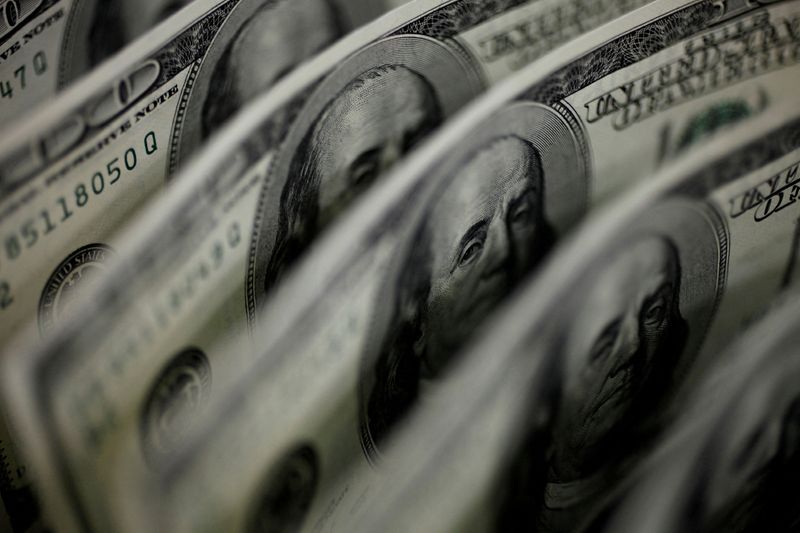Aussie slides with yuan after weak China data, yen soars
2023.05.31 02:34

© Reuters. FILE PHOTO: A picture illustration shows U.S. 100 dollar bank notes taken in Tokyo August 2, 2011. REUTERS/Yuriko Nakao
By Kevin Buckland
TOKYO (Reuters) – The Australian and New Zealand dollars declined along with the yuan on Wednesday after a surprise deterioration in Chinese factory activity stoked worries about the country’s sputtering post-pandemic recovery.
Traditional safe-haven currencies the dollar and yen outperformed the euro and sterling. The yen received additional support after Japan’s top currency diplomat warned on Tuesday that officials were watching the currency closely following its slide to a six-month low, which has raised the spectre of intervention.
Meanwhile, the Turkish lira hit a record low after President Tayyip Erdogan won an election runoff to extend his rule into a third decade.
The Australian dollar endured a rollercoaster ride after heated local inflation data and disappointing Chinese purchasing manager surveys were released simultaneously.
The initially jumped as much as 0.33% amid escalating odds for more central bank tightening, only to flip moments later to a 0.38% decline on escalating worries of a China slowdown. That later deepened to a 0.46% decline, taking it to the lowest since Nov. 10 at $0.6486.
“We have to remember that the Aussie is a pro-growth currency, strongly linked to the outlook for commodities,” said Rodrigo Catril, senior foreign-exchange strategist at National Australia Bank (OTC:).
“The lack of positive news coming from economic activity in China is exacerbating that view” for lower commodity prices, trumping domestic data pointing to tighter monetary policy, he said.
The New Zealand dollar sank as much as 0.78% to a 6-1/2-month trough at $0.5996.
The slumped to a six-month low in offshore trading, sinking as much as 0.43% to 7.0218 per dollar.
The – which measures the greenback against six major peers – rose 0.28% to 104.34.
The euro – which is the most heavily weighted currency in the index – declined 0.41% to $1.06910.
“China’s recovery, or a lack thereof, is a key theme for the G10 currency market,” said Shusuke Yamada, chief FX and rates strategist at Bank of America (NYSE:) in Tokyo.
“All else being equal, a weak China is a positive for the U.S. dollar, and to some extent the yen, against the euro or the Aussie.”
The dollar dropped further from a six-month high against the yen reached Tuesday, when Japan’s top currency diplomat said following a meeting of the country’s finance ministry, central bank and financial watchdog that officials “will closely watch currency market moves and respond appropriately as needed.”
It fell 0.26% to 139.41 yen, extending a 0.46% slide on Tuesday. The dollar hit a peak of 140.93 earlier that day, its highest since Nov. 23.
“The meeting was preemptive,” said Bart Wakabayashi, general manager at State Street (NYSE:) in Tokyo.
“I think the real line in the sand is 150,” added Wakabayashi, who expects diverging monetary policy outlooks in Japan and the United States to continue to push the currency pair higher.
“If we get above 145, we’re going to see pretty much every Japanese official on the wires trying to talk it down, and if they don’t like what they see, they’re going to act,” he said, referring to the risk of currency intervention.
Elsewhere, the Turkish lira sank as much as 1.21% to reach a record low of 20.67 per dollar.








